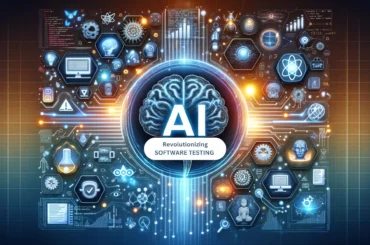Introduction to the Tech Industry in 2024
The tech industry in 2024 is poised for significant transformation and innovation. As we delve into the trends and developments that will shape the tech landscape, it’s crucial to set the stage with an overview of the industry’s evolution from the preceding year, 2023.
2023 was a year of upheaval and adaptation. It saw the emergence of several key themes that continue to reverberate into 2024. These themes encompass a wide spectrum of technological advancements and shifts in the industry. Here, we provide a glimpse into the major tech trends that set the stage for the current year.
Impact of Massive Layoffs in 2023
One of the defining moments of 2023 was the massive layoffs in tech giants such as Amazon, Google, and Microsoft. These layoffs sent shockwaves through the industry, and their effects are still being felt in 2024.
The layoffs not only affected the employees who were directly impacted but also had wider implications for the job market. As we explore the job market dynamics in Chapter 2, it’s essential to recognize how these layoffs contributed to the changing landscape for tech professionals, especially junior developers.
The consequences of these massive workforce reductions were multifaceted. They flooded the job market with talent, creating a highly competitive environment for job seekers. Simultaneously, the number of job openings declined, leading to a substantial reduction in opportunities for those looking to enter the tech industry.
In this chapter, we will delve deeper into the impact of these layoffs and their role in shaping the tech industry’s trajectory in 2024. We will analyze how companies and professionals have responded to these challenges and what it means for the future of tech.
Stay tuned as we explore each aspect of the tech landscape in the following chapters, from job market dynamics to economic factors, emerging technologies, and the ethical considerations surrounding artificial intelligence. The tech world is evolving rapidly, and understanding these trends is essential for staying ahead in this dynamic industry.
Job Market Dynamics
The tech industry is a dynamic and ever-evolving sector that continuously presents new challenges and opportunities. In this chapter, we delve into the intricate web of job market dynamics in 2024, focusing on the scenarios faced by professionals and job seekers.
The Challenging Scenario for Junior Developers
A Competitive Landscape
The year 2024 brings forth a highly competitive landscape for junior developers. Unlike the more favourable conditions experienced in 2021 during the remote work boom, this year poses unique challenges.
1. Increased Competition: As the job market flooded with experienced talent due to the massive layoffs in 2023, junior developers find themselves in direct competition with individuals who have substantial industry experience. The level of expertise expected from entry-level developers has risen significantly.
2. Skill Diversity: Employers now seek junior developers with diverse skill sets. Proficiency in multiple programming languages, frameworks, and tools has become a requirement, making it essential for junior developers to continuously upskill.
3. Remote Work Expectations: The tech industry’s adaptation to remote work during the pandemic has resulted in a shift in employer expectations. Junior developers are expected to be adept at collaborating in virtual environments, which adds another layer of complexity to their roles.
Current Job Openings and Trends
An Increase in Opportunities
While the tech job market in 2024 presents unique challenges for junior developers, there is a glimmer of hope in the form of an increase in job openings and emerging trends.
1. Job Openings on the Rise: Despite the competitive landscape, the tech industry has seen a 13.8% increase in job openings from earlier in the year. This growth indicates that the industry is still actively hiring, providing opportunities for job seekers.
2. In-Demand Skills: Certain skills remain in high demand in 2024. Junior developers with expertise in platform engineering, AI-augmented development, and industry cloud platforms are particularly sought after. These domains represent some of the leading-edge technologies shaping the industry.
3. Sustainable Technology: Sustainable technology is a growing trend driven by environmental concerns and regulatory changes. Companies are looking for tech professionals who can contribute to eco-friendly initiatives.
In this chapter, we’ve examined the competitive landscape and increasing job opportunities in the tech industry in 2024. As we progress through this article, we will explore other facets of the tech world, including economic factors, cryptocurrency resurgence, advancements in augmented and virtual reality, shifts in chip manufacturing, and the impact of artificial intelligence. Each aspect adds to the complexity and dynamism of the tech landscape in the current year.
Economic Factors and Their Influence
In the ever-evolving landscape of the tech industry in 2024, economic factors play a pivotal role in shaping the trajectory of various sectors. This chapter delves into the significant influence of economic variables, particularly high interest rates and their impact on startups and the real estate market. Additionally, we analyze the challenges faced by the automotive industry, with a special focus on Tesla’s pricing strategies.
The Role of High-Interest Rates
Navigating the High-Interest Rate Environment
The year 2024 witnessed a shift in economic dynamics, primarily driven by the resurgence of high interest rates. This shift had far-reaching consequences across multiple domains within the tech industry.
1. Cash-Burning Startups: High interest rates posed a significant challenge to cash-burning startups. These startups, often reliant on external funding and venture capital, faced increased borrowing costs. Many had to recalibrate their financial strategies, emphasizing profitability and sustainability over rapid expansion.
2. Real Estate Market: The real estate market felt the ripples of high interest rates. Transactions involving tech companies and commercial real estate were affected as borrowing became more expensive. Tech giants, in particular, had to reconsider their real estate investment decisions.
3. Investment Strategies: Investors in the tech sector had to reevaluate their portfolios in light of the changing interest rate environment. Traditional tech stocks and high-growth tech startups experienced shifts in valuation as investors adjusted their expectations.
Automotive Industry Struggles
Tesla’s Price Reductions and Market Challenges
The automotive industry, a sector closely tied to the tech world, faced its own set of challenges in 2024, with Tesla at the center of attention.
1. Tesla’s Pricing Strategies: Tesla, a pioneer in electric vehicles (EVs), made waves by reducing the prices of its EVs. This move aimed to make electric vehicles more accessible to a broader audience. We examine the impact of these price reductions on Tesla’s market share and the EV industry as a whole.
2. Competition and Innovations: Beyond Tesla, other automotive manufacturers continued to innovate in the EV space. We explore how these advancements affected the competitive landscape and the adoption of sustainable transportation solutions.
3. Regulatory Landscape: Government regulations and incentives played a significant role in the automotive industry’s trajectory. We discuss how government policies influenced the adoption of electric vehicles and the development of sustainable technology.
In this chapter, we’ve explored the intricate relationship between economic factors, particularly high interest rates, and their influence on startups, the real estate market, and investment strategies. Additionally, we’ve delved into the challenges faced by the automotive industry, with a spotlight on Tesla’s pricing strategies and the broader EV landscape. As we continue to navigate the tech landscape of 2024, we’ll uncover more trends and developments that shape the industry’s future.
Cryptocurrency’s Resurgence
In the ever-evolving world of technology, one trend that has continued to capture the imagination of investors, tech enthusiasts, and financial experts alike is the remarkable resurgence of cryptocurrency. This chapter takes an in-depth look at the journey of Bitcoin and the exciting predictions for the cryptocurrency landscape by the end of 2024.
Bitcoin’s Remarkable Journey
The Digital Gold’s Meteoric Rise
Bitcoin, often referred to as “digital gold,” has been a focal point of the cryptocurrency resurgence. Its journey from the beginning of 2023 to the present has been nothing short of astonishing.
1. Early 2023 Valuation: To understand Bitcoin’s resurgence, we need to rewind to the start of the year when it was valued at a specific price point. We provide a comprehensive overview of its price and market capitalization at that time.
2. Market Sentiment Shift: Explore the factors that contributed to the shift in market sentiment towards Bitcoin. From institutional investments to increased adoption by businesses, these catalysts fueled Bitcoin’s resurgence.
3. Predictions for 2024: Delve into expert predictions that suggest Bitcoin’s value could potentially reach over a million dollars by the end of 2024. We analyze the factors driving these predictions and the implications for both the cryptocurrency market and traditional finance.
Intriguingly, Bitcoin’s resurgence isn’t limited to financial markets alone; it’s indicative of a broader shift towards digital assets and blockchain technology. As we navigate the complex world of cryptocurrency, this chapter provides insights into Bitcoin’s remarkable journey and its potential impact on the financial landscape in 2024.
Augmented and Virtual Reality Advancements
In the rapidly evolving tech landscape of 2024, one area that stands out prominently is the advancement of Augmented Reality (AR) and Virtual Reality (VR) technologies. This chapter delves into the significant role played by Apple in pushing the boundaries of AR and VR, along with the potential opportunities it offers to app developers.
Apple’s Role in Advancing AR and VR
Apple Vision Pro: A Game Changer in AR and VR
Apple, known for its innovation in consumer technology, has made substantial strides in the AR and VR space with the introduction of Apple Vision Pro. This section explores the impact and implications of this groundbreaking development.
1. The Apple Vision Pro Ecosystem: We dissect Apple’s foray into AR and VR, detailing the hardware, software, and services that constitute the Apple Vision Pro ecosystem. From AR glasses to immersive VR experiences, Apple’s approach is comprehensive.
2. Advancements in AR: Dive into the specific advancements in Augmented Reality that Apple is pioneering. These include real-time object recognition, spatial audio, and enhanced gesture control. We explain how these innovations are transforming user experiences.
3. VR and the Metaverse: Apple’s investment in Virtual Reality and its alignment with the concept of the metaverse are explored. Discover how Apple is positioning itself in this metaverse, offering potential avenues for developers to create engaging virtual worlds.
4. Opportunities for App Developers: We outline the exciting opportunities that Apple’s advancements in AR and VR present to app developers. From creating immersive games and educational applications to revolutionizing industries like healthcare and engineering, the potential is vast.
Apple’s commitment to AR and VR technology is not only reshaping the way we interact with digital information but also opening up new horizons for creative minds and tech enthusiasts. As we navigate the era of Augmented and Virtual Reality advancements, this chapter sheds light on Apple’s pivotal role and the exciting prospects it brings to the tech industry.
Shift in Chip Manufacturing
In the ever-evolving landscape of technology, one of the most intriguing developments in 2024 is the shift in chip manufacturing. This chapter explores the significance of tech giants Microsoft and Amazon Web Services (AWS) entering the chip manufacturing industry and the potential implications for the broader tech ecosystem.
Microsoft and AWS: Producing Their Own Chips
The Dawn of a New Era in Chip Manufacturing
Microsoft and AWS, traditionally known for their cloud computing services, have made a strategic move by venturing into chip manufacturing. This section delves into the rationale behind this shift and its impact on the tech industry.
1. The Motivation Behind the Shift: We dissect the motivations driving Microsoft and AWS to produce their own chips. From enhancing performance in data centers to reducing reliance on third-party suppliers, there are several strategic reasons behind this move.
2. Potential Advantages: Explore the potential advantages of these tech giants producing their own chips. This includes better optimization of hardware for specific workloads and improved security in data processing.
3. The Shift Away from x86 Architecture: Discuss the potential implications of this shift away from x86 architecture, a significant departure from the industry norm. How will it affect compatibility and innovation in the tech world?
4. Competition and Collaboration: Examine how this move positions Microsoft and AWS in competition with traditional chip manufacturers like Intel and AMD while potentially collaborating with companies like NVIDIA in the AI and GPU space.
As the tech industry witnesses this transformative shift in chip manufacturing, the effects ripple across various sectors, from data centers to IoT devices. Microsoft and AWS are at the forefront of this revolution, and understanding their strategies and goals is essential to grasp the changing dynamics of the tech landscape in 2024.
Gaming and Game Engines
In the dynamic world of technology, the gaming industry stands out as a beacon of creativity and innovation. This chapter delves into the excitement surrounding the highly anticipated release of GTA 6 and the evolving landscape of pricing policies in the game development industry.
Anticipation for GTA 6
The Grand Theft Auto Phenomenon Continues
GTA 6, the latest installment in the iconic Grand Theft Auto series, has captured the imagination of gamers worldwide. This section explores the anticipation, expectations, and potential impact of this highly awaited game.
1. A Global Sensation: Discuss the worldwide popularity of the Grand Theft Auto franchise and how it has become a cultural phenomenon.
2. The Enigmatic Teasers: Analyze the cryptic teasers and trailers released by Rockstar Games, fueling speculation and excitement among gamers.
3. Gameplay and Graphics Advancements: Highlight the rumoured improvements in gameplay mechanics and graphics, potentially setting new standards in the gaming industry.
4. Multiplayer and Online Features: Explore the possibilities of GTA 6’s multiplayer and online modes and their potential to redefine the online gaming experience.
As gamers eagerly await the release of GTA 6, the gaming community is buzzing with excitement and predictions about the game’s impact on the industry and the broader cultural landscape.
Pricing Policies in the Game Development Industry
Balancing Profitability and Accessibility
The game development industry is not only about creating immersive experiences but also about navigating complex pricing strategies. In this section, we examine the controversy surrounding Unity’s new pricing policies and compare them to Unreal Engine’s advancements and legal battles.
1. Unity’s Pricing Overhaul: Discuss Unity’s decision to restructure its pricing model, including the introduction of usage-based pricing, and how it has been met with mixed reactions from developers.
2. Unreal Engine’s Competitive Edge: Explore the competitive advantages of Unreal Engine, its stable pricing, and the legal disputes it has faced, including the ongoing legal battle with Apple.
3. Impact on Developers: Analyze how these pricing policies influence game developers, from indie studios to major gaming companies, and the challenges they face in managing development costs.
4. Accessibility vs. Profitability: Delve into the delicate balance between making games accessible to a wide audience and ensuring profitability in a highly competitive industry.
As the gaming industry grapples with pricing dynamics, the choices made by game engine providers have a profound impact on the development community and the gaming experiences available to players.
In a world where technology and entertainment intersect, the gaming industry continues to evolve and shape the way we play and interact with virtual worlds.
Web Development Trends
The world of web development is in a perpetual state of evolution, adapting to the changing needs of users and businesses. In this chapter, we explore the current landscape of web development, focusing on the evolution of JavaScript frameworks and the emerging trends that are shaping the industry.
Evolution of JavaScript Frameworks
The Backbone of Modern Web Development
JavaScript has long been the backbone of web development, enabling dynamic and interactive web applications. In this section, we examine the state of JavaScript frameworks and their significance in the tech ecosystem.
1. The Dominance of JavaScript: Discuss the ubiquitous presence of JavaScript in web development and its role in creating responsive and engaging user interfaces.
2. The Rise of Frameworks: Explore the evolution of JavaScript frameworks, from early libraries like jQuery to modern frameworks like React, Angular, and Vue.js.
3. Comparing Frameworks: Provide a comparative analysis of popular JavaScript frameworks, highlighting their strengths, weaknesses, and common use cases.
4. Web Components and Micro Frontends: Investigate emerging trends like web components and micro frontends, which are changing the way web applications are built and maintained.
Predicting a Shift towards Tools and AI
The Future of Web Development
As technology continues to advance, web development is poised for further innovation. In this section, we explore the potential shift towards tools and AI-driven solutions in web development.
1. Automation in Web Development: Discuss how AI and machine learning are streamlining web development tasks, such as code generation, testing, and optimization.
2. Low-Code and No-Code Platforms: Explore the growing popularity of low-code and no-code development platforms, making it easier for non-developers to create web applications.
3. AI-Powered User Experiences: Analyze how AI is enhancing user experiences by personalizing content, optimizing performance, and enabling voice and chatbot interfaces.
4. Challenges and Opportunities: Address the challenges and opportunities presented by the integration of AI in web development, including ethical considerations and the need for upskilling.
As web development continues to evolve, embracing new technologies and approaches will be essential for staying competitive in the digital landscape. The intersection of AI and web development holds the promise of more efficient, intelligent, and user-centric web applications.
Mobile App Development
In the ever-evolving landscape of technology, one aspect that continues to shape our lives is the world of mobile applications. In this chapter, we delve into the dynamics of mobile app development, shedding light on changing user behaviors and the challenges faced by app developers.
9.1. Changing Behavior of App Users
Evolution in User Preferences
Mobile apps have become an integral part of our daily routines, offering convenience and connectivity at our fingertips. However, the behavior of app users is not static, and understanding these changes is crucial for developers and businesses alike.
1. The Decline in App Downloads: Explore the trend of declining app downloads and how users are becoming more selective in choosing which apps to install.
2. Rise of Super Apps and All-in-One Platforms: Discuss the growing popularity of super apps, which offer multiple services within a single application, and their impact on traditional standalone apps.
3. In-App Purchases and Monetization Strategies: Examine the shift towards in-app purchases and subscription-based models and their role in revenue generation for app developers.
4. User Privacy and Data Security: Address the increasing concerns about user privacy and data security, and how these concerns are shaping app development practices.
5. The Challenge of App Discovery: Analyze the challenges app developers face in getting their apps discovered in a crowded marketplace and the strategies they employ.
Highlighting the Challenges of Competing with Established Apps
Navigating a Competitive Landscape
The mobile app market is highly competitive, with millions of apps vying for users’ attention. For newcomers and smaller developers, breaking into this space can be a daunting task.
1. App Store Optimization (ASO): Discuss the importance of ASO in increasing app visibility and the key factors that developers should consider.
2. Building User Trust: Explore strategies for building user trust, including transparent data practices, customer reviews, and excellent customer support.
3. Cross-Platform Development: Examine the advantages and challenges of cross-platform development using tools like React Native and Flutter.
4. Niche and Specialized Apps: Highlight the potential of niche and specialized apps in catering to specific user needs and interests.
5. User-Centric Design: Emphasize the significance of user-centric design principles and the role of user feedback in app improvement.
As mobile technology continues to advance, and user preferences evolve, mobile app developers must adapt and innovate to create applications that meet the changing needs of their audience.
Emerging Low-Level Languages
In the ever-evolving world of programming languages, a new trend is on the rise – the emergence of low-level languages like Rust, Zig, and Mojo. In this chapter, we’ll dive into the realm of these languages and explore their growth, relevance, and applications in the tech landscape.
10.1. Analyzing the Rise of Rust, Zig, and Mojo
A New Generation of Programming Languages
Traditional high-level programming languages like Python, Java, and C++ have been the go-to choices for developers for years. However, as technology advances and the demand for efficiency and security grows, low-level languages are gaining traction.
1. The Birth of Rust: Discuss the origins of Rust and its unique features, including memory safety, zero-cost abstractions, and fearless concurrency.
2. Zig: The Versatile Language: Explore the versatility of Zig, which aims to provide a balance between high-level and low-level programming with a focus on safety.
3. Mojo’s Asynchronous Power: Highlight the asynchronous programming capabilities of Mojo and its potential in building efficient and responsive applications.
Discussing Their Relevance and Applications
Where Low-Level Languages Shine
While low-level languages come with a steeper learning curve, they offer distinct advantages in certain scenarios.
1. System-Level Programming: Examine how Rust, Zig, and Mojo excel in system-level programming, making them ideal choices for developing operating systems, device drivers, and embedded systems.
2. WebAssembly and the Browser: Discuss the role of these languages in WebAssembly and their potential to bring high-performance applications to web browsers.
3. Security and Safety: Explore how Rust’s memory safety and Zig’s focus on correctness contribute to building secure and reliable software.
4. Game Development: Analyze the suitability of these languages for game development, especially in scenarios where performance and control are critical.
As technology continues to advance, low-level languages like Rust, Zig, and Mojo offer developers a unique set of tools to tackle complex challenges. Whether it’s building systems, crafting efficient web applications, or ensuring software security, these languages are making their mark in the world of programming.
Artificial Intelligence’s Impact in 2024
In the ever-evolving world of technology, one trend that stands out prominently in 2024 is the remarkable impact of Artificial Intelligence (AI) on various industries. In this chapter, we’ll delve into the rapid advancements in AI and explore the potential implications for different sectors.
The AI Advancements Unveiled
A Leap Forward in AI Capabilities
AI has come a long way since its inception, and 2024 has witnessed groundbreaking advancements that are reshaping the landscape.
1. Text-to-Video Models: Explore the exciting development of AI-powered text-to-video models that can transform written content into compelling video presentations. Discuss their applications in content creation, marketing, and education.
2. AI-Augmented Development: Delve into the concept of AI-augmented development, where machine learning algorithms assist developers in coding, testing, and debugging. Highlight its potential to boost productivity and reduce errors in software development.
Navigating Ethical Considerations
The Ethical Landscape of AI
As AI continues to advance, ethical concerns loom large. It’s crucial to address these concerns and engage in thoughtful discussions.
1. Ethical Considerations: Examine the ethical challenges posed by AI, such as bias in algorithms, privacy infringements, and the responsible use of AI in decision-making processes.
2. The Quest for AGI: Explore the concept of Artificial General Intelligence (AGI) and the ongoing quest to create AI systems with human-level cognitive abilities. Discuss the potential benefits and risks associated with AGI.
3. Living in a Simulation: Dive into philosophical discussions about the possibility of humanity existing in a simulated reality. Explore thought-provoking theories and their implications on our understanding of AI and the universe.
In 2024, AI is not just a tool; it’s a transformative force with the potential to revolutionize industries and raise profound ethical questions. As we harness the power of AI, it becomes imperative to navigate these advancements with responsibility and mindfulness.
Conclusion and Future Outlook
As we conclude our exploration of the ever-evolving tech landscape in 2024, it’s essential to recap the key trends and developments discussed in this article. Additionally, we’ll peer into the crystal ball and offer insights into what the future might hold for the tech industry beyond 2024.
Recap of Key Trends in Tech for 2024
A Year of Transformation
2024 has been a year of remarkable transformation in the technology sector. Let’s recap some of the key trends and developments that have shaped the industry:
- Tech Industry Evolution: The tech industry has undergone significant evolution, adapting to new challenges and opportunities.
- AI Advancements: AI has taken center stage with rapid advancements, including AI-augmented development and text-to-video models.
- Economic Factors: High-interest rates have impacted startups, while the automotive industry faces unique challenges.
- Cryptocurrency Resurgence: Bitcoin’s resurgence and the potential for tokens to reach record values have captured attention.
- AR and VR Advances: Apple’s role in advancing augmented and virtual reality technologies promises exciting opportunities for developers.
- Shift in Chip Manufacturing: Microsoft and AWS’s entry into chip manufacturing hint at a potential shift in the industry.
- Gaming and Game Engines: The anticipation for GTA 6 and the pricing policies in the game development industry have fueled discussions.
- Web Development Trends: JavaScript frameworks are evolving, with predictions of a shift towards AI tools.
- Mobile App Development: Changing user behavior has impacted app downloads and the competition with established apps.
- Emerging Low-Level Languages: Low-level languages like Rust, Zig, and Mojo have gained traction, finding applications in various domains.
- AI Impact: AI’s impact has been felt across industries, raising ethical considerations and philosophical discussions.
Future Outlook
Navigating the Uncertainty
Looking ahead, the tech industry is set to continue its rapid evolution. Here are some insights into what the future might hold:
- AI Everywhere: AI will become increasingly ubiquitous, permeating various aspects of our lives, from healthcare and education to entertainment and business.
- Metaverse and Web3: The development of the metaverse and the progress in Web3 technologies will open up new frontiers for innovation and collaboration.
- Sustainable Technology: Sustainability will be a driving force in tech, with a focus on environmentally friendly solutions and practices.
- Platform Engineering: The role of platform engineering in enabling seamless and scalable applications will become more pronounced.
- Intelligent Applications: Applications will become smarter, leveraging AI to offer personalized and efficient user experiences.
- Democratized Generative AI: Access to generative AI tools will be democratized, empowering individuals and businesses to create content and applications with ease.
- Tech Trends Beyond 2024: The technology landscape will continue to evolve, and staying informed about emerging trends will be crucial for businesses and professionals.
In conclusion, the tech industry in 2024 is a dynamic and ever-changing ecosystem. As we adapt to these changes, embracing innovation and ethical considerations will be pivotal in shaping a future where technology continues to improve our lives and the world around us. Thank you for joining us on this journey through the changing landscape of tech, and we look forward to what lies ahead.






